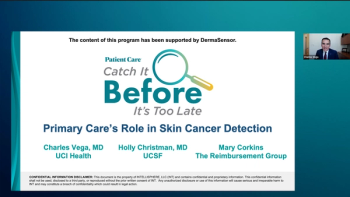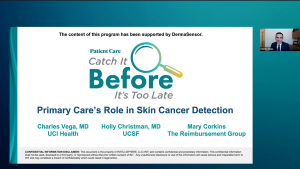
Panelists discuss billing and coding procedures for skin scanning devices, focusing on the use of unlisted Current Procedural Terminology (CPT) 99 codes with proper documentation and modifiers, the importance of clear communication with billing teams, available educational resources to aid primary care settings, and operational considerations including scope-of-practice variations for device use among clinical staff.


